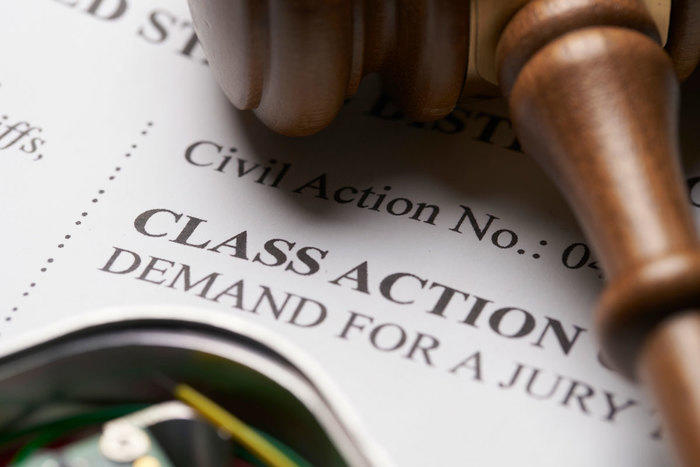Justice for All: The Role of Class Action Lawsuits in Shielding Consumers
Justice for All: The Role of Class Action Lawsuits in Shielding Consumers
Blog Article
Recognizing Course Activity Lawsuit: An Overview for Attorney
Course activity legal actions have actually come to be an indispensable part of the legal landscape, permitting the combination of multiple cases into a single action. For attorneys, understanding the intricacies of course action litigation is essential in effectively representing their customers. This extensive guide checks out the basics of class action suits, from determining possible course members to browsing the qualification process. Additionally, it explores crucial techniques for managing course action litigation and gives insights into acquiring and negotiating authorization for settlements. By diving into the intricacies of course action claims, this guide outfits attorneys with the knowledge and tools required to effectively navigate this complicated area of regulation.
The Basics of Course Action Legal Actions
Course action claims are a legal system utilized to combine similar claims from a group of people right into a solitary suit, supplying a cost-efficient and efficient method to looking for justice and resolution. This sort of claim allows a representative plaintiff, acting on part of the whole course, to bring a case versus a defendant who has allegedly caused harm or broke the legal rights of several people.
The standard needs for bringing a course activity legal action consist of numerosity, commonness, typicality, and competence of depiction. Numerosity describes the reality that the course need to be so large that joinder of all members would be impractical. Commonality means that there should prevail concerns of legislation or truth that are shared by all participants of the course. Typicality calls for that the cases of the depictive complainant are normal of the insurance claims of the entire class. Lastly, competence of depiction makes sure that the representative plaintiff will effectively stand for the rate of interests of the entire class.
Course activity legal actions can be helpful for both plaintiffs and defendants. For complainants, it enables them to pool their sources and share the threats and costs connected with litigation. It also gives an equal opportunity when they are up versus large firms or entities. For accuseds, it supplies the chance to successfully solve multiple insurance claims in a single claim, avoiding the requirement to resist countless individual claims.
Identifying and Assessing Prospective Class Members
After developing the standard requirements for a class activity suit, the following action is to identify and evaluate prospective course participants. If they fulfill the necessary criteria., this process involves identifying who might be component of the course and examining their cases to establish.
To recognize possible course participants, legal representatives generally conduct extensive study and collect pertinent details. This might involve assessing records, performing meetings, and examining documents to determine people or entities that might have been impacted by the alleged misdeed. It is essential to develop a thorough and clear listing of potential class members to make sure that all impacted events are consisted of in the legal action.
As soon as prospective course members have been identified, the following action is to examine their insurance claims. If they fulfill the legal demands for class certification, this includes reviewing the advantages of each specific claim to figure out. Legal representatives must thoroughly evaluate the truths, proof, and legal concepts of each possible course participant's case to make sure that they have a sensible instance.
Evaluating prospective course participants additionally entails determining whether they meet the class interpretation and have endured comparable damage as an outcome of the accused's actions. This needs comparing the realities and circumstances of each possible class member's scenario to the claims and lawful concepts put forth in the suit.
Navigating the Class Certification Refine
To efficiently navigate the class qualification process, attorneys have to diligently abide by the procedural needs set forth by the court. Course certification is a critical action in a class action claim, as it establishes whether an instance can continue as a course activity, standing for a team of people who have similar insurance claims against an accused. The process involves satisfying specific criteria, such as numerosity, commonality, typicality, and adequacy of depiction.
To start with, lawyers have to develop numerosity by showing that the course is so big that private joinder is impractical. This can be achieved through proof or specialist statement. They have to establish commonality by revealing that there are usual concerns of law or fact that predominate over private issues. This requires a comprehensive evaluation of the defenses and cases included.
Next, lawyers need to show typicality, which suggests that the representative complainant's insurance claims are typical of the insurance claims of the class participants. This guarantees that the passions of the representative complainant align with the passions of the class. Last but not least, lawyers have to demonstrate competence of representation, indicating that the depictive plaintiff and their advise will fairly and adequately represent the passions of the class.
To navigate this procedure efficiently, lawyers need to extensively prepare by conducting substantial study, gathering evidence, and establishing an engaging debate that pleases each of these criteria. They should additionally be prepared to react to any arguments or obstacles elevated by the defendant. By vigilantly sticking to the step-by-step needs set forth by the court, attorneys can boost view their opportunities of obtaining class certification and advancing the passions of the class participants.

Secret Methods for Managing Class Activity Lawsuits
Upon efficiently navigating the class accreditation process, lawyers need to after that carry out essential strategies for successfully taking care of course activity litigation. These strategies are important to guarantee that the instance continues smoothly and efficiently, inevitably making the most of the possibilities of a favorable outcome for the class members.
One trick approach is to establish a strong and natural lawful team (Class action lawsuit). This involves putting together a team of attorneys with experience in class activity litigation, in addition to various other pertinent areas such as the certain industry or subject matter associated with the instance. A versatile team can bring different perspectives and abilities to the table, improving the overall effectiveness of the lawsuits
One more vital technique is to create a well-balanced and extensive lawsuits plan. This plan should describe the total objectives of the situation, along with the certain lawful theories and debates that will certainly be sought. It should additionally include a timeline and budget to make certain that the situation remains on track and within the designated resources.
In addition, lawyers ought to proactively engage with the course participants throughout the litigation process (Class action lawsuit). This consists of giving normal updates on the progression of the case, seeking input and comments from the course members, and dealing with any type of questions or worries they might have. By promoting open interaction and partnership, attorneys can construct trust and support amongst the class members, which can be important in attaining an effective resolution
Resolving Course Action Legal Actions: Arrangement and Approval
When it pertains to working out class action claims, effective settlement and getting approval are important action in accomplishing a resolution. Course action suits are complicated and include a lot of plaintiffs, making it critical to get to a negotiation that is reasonable and satisfying to all events involved.

Once a negotiation agreement is reached, it must be accepted by the court. The court's duty in this procedure is to make certain that the settlement is reasonable, practical, and sufficiently safeguards the interests of the class members. The court will certainly think about aspects such as the nature of the insurance claims, the stamina of the evidence, the possible healing for the class members, and any kind of arguments elevated by course participants.
Getting court approval is vital as it gives finality to the negotiation and secures the rate of interests of the class members. It makes sure that the negotiation is binding and enforceable, and class members can obtain their rightful settlement.
Verdict

Class activity suits have actually ended up being an important part of the lawful landscape, allowing for the consolidation of several cases into a single action. Course accreditation is a critical action in a course action lawsuit, as it identifies whether a case can proceed as a course action, standing for a special info group of individuals that have similar cases against an accused. By diligently sticking to the step-by-step needs established forth by the court, legal representatives Go Here can increase their chances of acquiring class qualification and advancing the rate of interests of the course members.
The court will take into consideration elements such as the nature of the cases, the strength of the evidence, the prospective recovery for the course participants, and any objections increased by course members.
By recognizing and assessing prospective course participants, lawyers can figure out the practicality of a course activity lawsuit.
Report this page